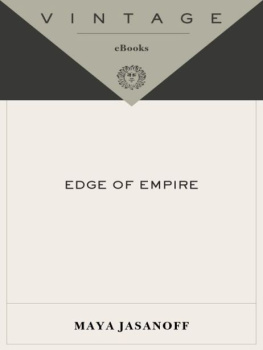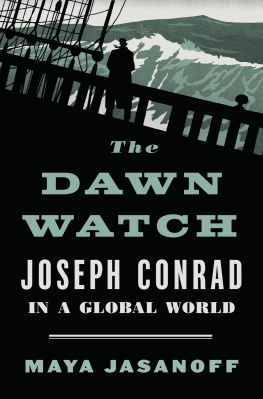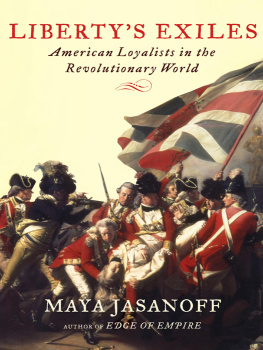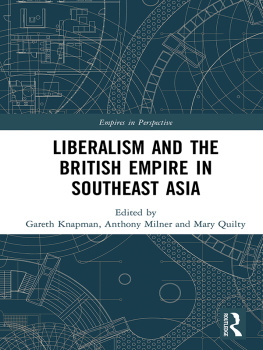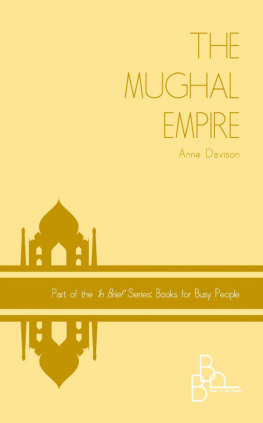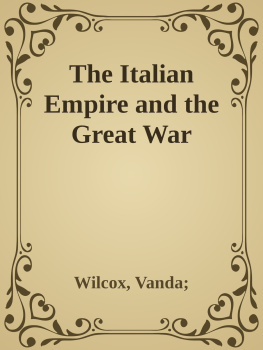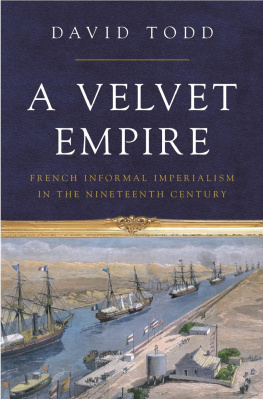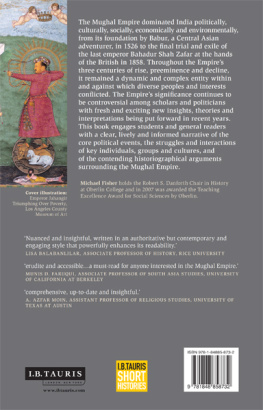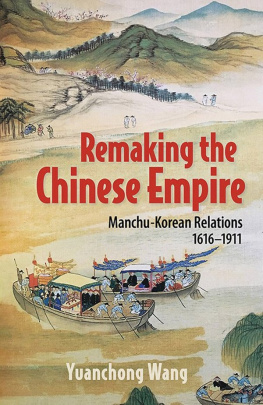Table of Contents
Maya Jasanoff
EDGE OF EMPIRE
Maya Jasanoff was educated at Harvard, Cambridge, and Yale and is currently assistant professor of British history at the University of Virginia. This is her first book.
For my parents, border crossers
INTRODUCTION
A World of Empires, an Empire of the World
It was a clear autumn morning in Calcutta, shortly after the holiday of Durga Puja. At the end of a narrow lane towered a giant image of the white ten-armed goddess, Shivas female incarnation, which had been built for the festivities out of bamboo slats, papier-mch, and a considerable quantity of lurid paint. Earlier, I had walked through what appeared to be Calcuttas central banana depot, where whole branches of cascading bananas were being unloaded by the truckload and stacked as high as firewood outside a mountain cabin. Another turning led into a street thick with the toasted smell of cooking oil, where men sat rolling and frying bright yellow sweets called laddoos, heaping them up, once cooked, in tall cones. But there, ahead of me, was the most unexpected sight of all: a vast Palladian villa, set off by a pair of wrought-iron gates, rising behind the cramped alleys like a painted stage set.
The Marble Palace, as this place is called, is only partly a house. Ever since it was built, in 1835, its owners, an orthodox Hindu family named Mullick, have filled their mansion with art and objects from all over Europe and have opened it to visitorswhich makes the Marble Palace Indias first museum of Western art. I would learn more about the contents and the history of the Marble Palace on another day. But that morning, as I walked past the baroque fancies in the front garden and up the shallow steps, I had the feeling that I was wandering into an alternate, wonderfully unknown world. I sat on a high, cracked leather banquette in the Billiard Room. Plaster and marble images of Greek gods peered out from the walls, and ceiling fans like the propellers of World War II bombers loomed overhead. Though the honking city was just a few hundred feet away, the only sound here was birdsong, from a veritable aviary of wire cages in the courtyard beyond. It was like Dickens gone native.
It is so easy to dwell on the sheer cultural oddity of this kind of place, plainly the creation of individual sensibilities, and so at variance with its surroundings. But what if one tries to make sense of it on its own terms? I visited the Marble Palace in the course of my research on the cultural history of the British Empire. Most of what I had read about empire and culture drew a detailed if rather insidious picture of white European colonizers trying to supplant, appropriate, or denigrate the non-European peoples and societies they encountered. More attention was paid to how Europeans responded to non-Europeans than vice versa, and emphasis tended to be placed more on conflict than on convergence. But here was something quite different: a site genuinely embedded in the cultures of both East and West, and a vestige of empire still very much alive. What would it be like, I wondered, to enter imperial history through a gateway like this? What would empire look like from the inside out?
The Marble Palace was just one of many unexpected juxtapositions of East and West that I encountered while writing this book. There was the heart-stopping moment of finding the Mughal emperors letters in the back room of an archive in the French Alps, folded into narrow strips and bunched into a battered metal chest, as if untouched since being read by their Savoyard recipient two hundred years before. There was my discovering, one sun-baked noon in the deserted ruins of an Egyptian temple, the name of a long-dead English diplomat scratched feebly into the stonea sad grasp at immortality. Then there was spotting his arch rivals signature in New York, of all places, carved on an inner wall of the Temple of Dendur, beneath the glass ceiling of the Metropolitan Museum of Art. There was visiting an impeccably Tuscan villa on a hillside at the edge of Florence, only to find in it a sword with a tiger-headed hilt, seized in 1799 from the South Indian city of Seringapatam during one of the British Empires most dramatic battles.
None of these scattered testamentsranging across Europe and even America, as well as Britain and its former empireis the kind of evidence that figures in most books about the British Empire. That history tends to be impersonal, sometimes doctrinaire, and often leaves out the wider context of Europe and the rest of the non-imperial world. At the heart of this book, by contrast, are these material remains and the stories behind them. Each one of these vestiges was left by a person who lived in India or Egypt, on the eastern frontiers of what became the British Empire, at a time when enduring cultural, social, and political boundaries between East and West were taking shape. These are the legacies of men and women who engaged with foreign cultures in tangible ways: as collectors of objects. Collectors bought, commissioned, traded, plundered, stole, captured, quested; they preserved and at times destroyed; they moved and coveted; they lost and remembered. In their lives and legacies, they bridged East and West, and make beguiling escorts into an intimate, little-known history of empire.
They also hold up a mirror to the larger story of how Britain itself collected an empire, in India and beyond. The century from 1750 to 1850 was a formative one for Britain and the British Empire. In 1750, Britain was an island in a sea of empiresa small island: with a population of eight million, it was only half the size of its historic enemy France, an imbalance that provoked tremendous national anxiety.1 Britains colonial empire was also comparatively modest. In the Atlantic world, Spain and Portugal remained major powers. France posed a greater challenge. Though Britains North American colonies dwarfed neighboring New France (boasting 2.5 million settlers to New Frances paltry 70,000), France threatened to link up its settlements in the Great Lakes with those along the Mississippi, choking off the thirteen colonies and laying claim to the beckoning West. In the Mediterranean and Middle East, Britains presence was minimal compared with that of France, Spain, or the Italian states. In India, it was just one of several European nationsincluding Portugal, the Netherlands, France, and Denmarkto maintain factories, or trading outposts, along the coast. The Spanish, Portuguese, and Dutch dominated trade to east and southeast Asia (the Netherlands controlled the valuable spice islands of modern-day Indonesia); and the South Pacific, later a region of intense Anglo-French rivalry, would not be seriously explored by Britain until Captain James Cook set off on his first voyage, in 1768.
But by 1850, the world, and Britains position in it, looked dramatically different. Britain had become the worlds first and largest industrialized nation, with a population almost three times larger than in 1750 and now heavily urban. Unlike almost every region of Europe, it had escaped the devastations of invasion, revolution, and civil war. Within Europe, Britain enjoyed unprecedented diplomatic and political authority, as well as industrial, commercial, and financial preeminence. Overseas, few of Britains former imperial rivals could compete. Of the old colonial powers, France alone offered some counterweight, its empire relaunched with the invasion of Algeria in 1830. But at midcentury, the greatest challengers to British global power were still partly in the making: the United States and Russia, empires both, each racing toward the Pacific. The British Empire in 1850 encompassed a quarter of the globe, stretching from Ottawa to Auckland, Capetown to Calcutta, Singapore to Spanish Town. One in five people in the world was Queen Victorias subject; many millions more (in Argentina or Portugal, for instance) lived in states bankrolled and indirectly steered by Britain. With this tremendous geographical expansion also came consistency of purpose, personnel, and culture, linking the empires many and disparate parts. The British Empire would always have its critics, at home and abroad; it would also always be more coherent in name (or on a map) than in practice. But by 1850, many Britons had come to see the empire as a fundamental part of what Britain itself was about, a key component of national identity. The imperial sun had risen, and seemed unlikely to set.

